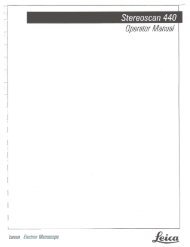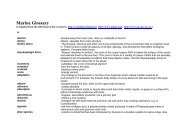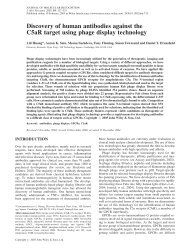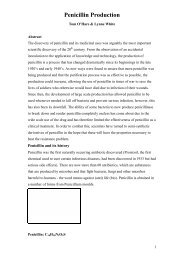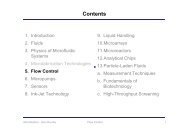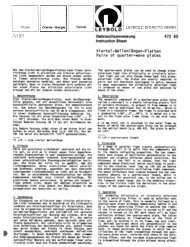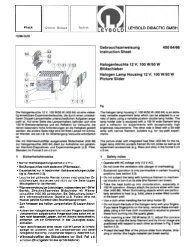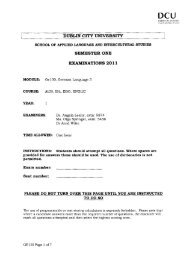Operational Manual - DCU
Operational Manual - DCU
Operational Manual - DCU
You also want an ePaper? Increase the reach of your titles
YUMPU automatically turns print PDFs into web optimized ePapers that Google loves.
SECTION 3 TORSION TESTING<br />
r<br />
General Notes on Experimental Work<br />
The tests possible with Torsion Testing Machine<br />
include the determination of the upper and lower yield<br />
strengths for nonnalised steel specimens, demonstration<br />
of the Bauschinger effect, and other effects relating to<br />
work hardening and heat-treatment. The detailed<br />
procedure outlined below should be followed in each<br />
case in order to maintain consistent readings of<br />
specimen twist using the scales provided. If a<br />
torsiometer is used, or if high accuracy is not required,<br />
there is no need to relevel the displacement arm before<br />
each reading (i.e. there is no need to maintain a zero<br />
reading on the dial gauge). This part of the procedure is<br />
only necessary in order to maintain the position of one<br />
end of the specimen stationary whilst registering the<br />
true angle of twist on the protractor scales. Omitting this<br />
step will not affect the accuracy of the torque readings.<br />
It should be noted here that the protractor scales only<br />
give an approximate measure of the twist of the<br />
specimen since readings include the twist of the drive<br />
shafts and specimen ends, and also any slight movement<br />
of the specimen ends in the drive sockets. These effects<br />
will be most significant in the elastic range where the<br />
load increases rapidly for only a small twist of the<br />
specimen. If the modulus of rigidity is to be determined,<br />
it is recommended that a torsiometer should be used.<br />
Reverse loads are applied by turning the handwheel<br />
anti-clockwise. Note that the Digital Meter reading will<br />
then be negative.<br />
IMPORTANT<br />
Always reduce the load to zero if it is required to<br />
remove a specimen before failure (for exam pIle,<br />
for heat treatment). DO NOT ATTEMPT TO<br />
REMOVE A SPECIMEN WHEN UNDER<br />
LOAD.<br />
Detailed<br />
Procedure<br />
1. For forward loading rotate the input handwheel<br />
clockwise until the input shaft has rotated, for<br />
example, through 0.5° as indicated by the dial.<br />
2. Return the reading on the dial gauge to zero by<br />
rotating the levelling handwheel.<br />
3. Record the torque displayed by the Digital Meter,<br />
noting the units and record the total angle of twist<br />
from zero.<br />
4. Repeathe procedure as required until the specimen<br />
has yielded or until all points of interred have l)een<br />
covered. Note that in the plastic range, angles of<br />
twist can be incremented to 6° or multiples of 6°.<br />
For ductile specimens, increments of up to 60° may<br />
be required, as some specimens require up to<br />
revolutions before failure occurs.<br />
r<br />
r<br />
r



